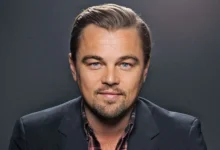Title: Celebrity Advertising Examples: The Power of Star Power in Marketing

Celebrity Advertising Examples: Celebrity endorsements have been a staple in marketing strategies for decades. The idea of using famous individuals to sell products is not only effective but it’s also become a cultural norm. When a celebrity is attached to a brand, they bring with them their star power, influence, and personal connection with their audience. This can make a massive difference in how a product or service is perceived, and ultimately, its success in the market.
In this article, we’ll explore some of the most memorable and successful celebrity advertising examples, looking at how they have shaped advertising strategies and why they continue to be such a powerful tool for marketers. Whether it’s a household name promoting a luxury brand, or a rising star in the digital space partnering with an up-and-coming product, celebrity endorsements have proven time and time again that they hold incredible marketing potential.
The Rise of Celebrity Endorsements in Advertising
Celebrity endorsements in advertising are nothing new. The concept has been around for centuries, but it truly gained traction during the 20th century. With the rise of mass media, especially television, advertisers quickly realized the impact a well-known face could have on their brand. Consumers are more likely to trust a product if someone they admire is using it. Over the years, this marketing strategy has evolved, and today, it is not just about getting A-list actors and musicians involved in your campaigns. It’s about leveraging social media influencers, athletes, and even online personalities.
In the early days of celebrity endorsements, the focus was on print ads, radio, and TV commercials. The likes of Coca-Cola and Pepsi began using major stars in their campaigns, from athletes to film icons. This helped to cement the idea that celebrities could elevate a brand’s image. But as technology has advanced, so too has the way brands interact with celebrities. Social media platforms like Instagram and TikTok have opened up a whole new realm of possibilities for celebrity endorsements, allowing companies to reach younger, more digitally-savvy audiences. Celebrities today don’t just promote products through traditional means but are also becoming an essential part of online campaigns, influencing consumer purchasing decisions on a massive scale.
Memorable Celebrity Advertising Examples

Nike and Michael Jordan
When we talk about celebrity advertising, it’s impossible not to mention Nike and Michael Jordan. Their partnership is one of the most iconic and successful in the history of advertising. Back in the late 1980s, Nike signed Jordan to a deal that would change the world of marketing forever. The Air Jordan brand, which launched in 1985, went on to become a cultural phenomenon. What made this collaboration so impactful wasn’t just Jordan’s legendary talent on the basketball court, but the way Nike positioned him as more than just an athlete.
The Air Jordan campaign tapped into Jordan’s larger-than-life persona, portraying him as a symbol of excellence, perseverance, and success. As a result, Nike didn’t just sell sneakers – they sold a lifestyle. To this day, Air Jordans are still one of the most recognizable and sought-after shoe lines globally. The partnership with Michael Jordan showed how celebrity endorsements could transcend advertising, creating not just a product but a cultural movement. Nike and Jordan have since become synonymous, proving that a strategic celebrity partnership can go beyond sales and become a cornerstone of a brand’s identity.
George Clooney and Nespresso
Another notable celebrity advertising example comes from George Clooney’s long-running partnership with Nespresso. Clooney became the face of the luxury coffee brand in 2006, and his suave, charismatic persona immediately struck a chord with consumers. Nespresso, known for its premium coffee machines and capsules, found an ideal brand ambassador in Clooney. His cool, laid-back image aligned perfectly with the sophisticated lifestyle Nespresso aimed to sell. Over the years, Clooney’s involvement with Nespresso evolved from simple commercials to more intricate, narrative-driven campaigns that focused on the brand’s commitment to sustainability and quality.
What sets this partnership apart is how George Clooney’s personality has been seamlessly woven into Nespresso’s brand story. The ads are not just about selling coffee machines but about creating an experience. Clooney’s presence adds a sense of luxury and refinement to the brand, positioning it as a must-have for consumers who want to elevate their coffee-drinking experience. The success of the Nespresso campaign highlights the importance of choosing the right celebrity for your brand – someone whose personality resonates with the values of the product being marketed.
The Impact of Social Media Influencers on Celebrity Advertising

Kylie Jenner and PepsiCo
While traditional celebrities still hold significant sway in the world of advertising, the rise of social media influencers has added a new layer of complexity to the equation. One of the most prominent celebrity influencer campaigns was by none other than reality TV star and business mogul Kylie Jenner. In 2015, Jenner signed a deal with PepsiCo to promote the brand’s new line of soft drinks. Her social media presence and massive following made her a perfect fit for the campaign.
Jenner used her Instagram and Twitter platforms to promote the product, which led to an immediate boost in PepsiCo’s sales. What made this partnership particularly effective was the way Kylie was able to connect with her audience directly, bypassing traditional advertising methods. With over a billion followers across her social media channels, Jenner’s endorsement carried a level of authenticity and relatability that resonated with consumers, particularly the younger demographic. The power of social media influencers in advertising is something that brands can no longer ignore, and Kylie Jenner’s success in promoting PepsiCo shows just how powerful a celebrity’s brand can be in today’s advertising landscape.
David Beckham and H&M
David Beckham, the football superstar, has built a brand of his own over the years, thanks to his on-field success and off-field ventures in fashion and business. Beckham’s partnership with H&M is a prime example of a celebrity endorsement that blends fashion with lifestyle. The collaboration began in 2012 when Beckham launched a line of men’s underwear for the retail giant. The campaign featured Beckham in a series of steamy ads that showcased both his athletic physique and the premium quality of the product.
Beckham’s massive global appeal, combined with his interest in fashion, made him an ideal ambassador for the brand. The ads, which featured him modeling the underwear in various settings, were not just about the product but about selling a particular image of masculinity and confidence. Beckham’s endorsement helped to elevate H&M’s brand identity, positioning it as a fashion-forward, affordable option for men who wanted to emulate Beckham’s polished, athletic style. As a result, H&M saw a significant boost in sales, proving once again the effectiveness of celebrity advertising when the right person is chosen to represent a brand.
Why Celebrity Advertising Works
Celebrity endorsements work because they leverage the emotional connection that consumers have with celebrities. People trust celebrities – they admire them, follow their careers, and often look up to them as role models. When a brand taps into this connection, they are essentially borrowing some of that trust and goodwill. This is especially true when the celebrity aligns with the values and image of the brand they are promoting. A well-chosen celebrity can help elevate a product or service, turning it into a symbol of something larger than just a transactional purchase.
Authenticity and Relatability
One of the key reasons celebrity advertising continues to be so successful is because it can feel incredibly authentic. Celebrities often have a natural ability to influence public opinion, not only because of their fame but because of their perceived authenticity. When they endorse a product, they often come across as genuine, as though they truly believe in the product or service they are promoting. This authenticity is important because consumers are more likely to purchase products from brands they perceive as authentic. Whether it’s a pop star advocating for a beauty product or a sports legend promoting a car, consumers are more inclined to trust someone they see as a role model.
Building Emotional Connections
Celebrity endorsements can also help build a strong emotional connection with consumers. When a celebrity is featured in an ad, they can create a narrative that connects emotionally with the audience. For example, an athlete promoting sportswear may evoke feelings of strength, perseverance, and ambition. A movie star endorsing a luxury perfume might evoke ideas of sophistication, elegance, and glamour. This emotional connection can have a profound impact on a consumer’s decision to make a purchase, as people often make buying decisions based on how they feel, not just the features or benefits of the product.
The Future of Celebrity Advertising
As we look toward the future of advertising, it’s clear that celebrity endorsements will continue to play a pivotal role in shaping brand identities and consumer behavior. However, as consumer behavior shifts, so too will the way celebrities are used in marketing campaigns. Brands will need to be more strategic and discerning in their selection of celebrities, opting for individuals who truly resonate with their target audience. Additionally, the rise of social media influencers and digital personalities suggests that the future of celebrity advertising will be more diverse, inclusive, and targeted than ever before.
In the coming years, we may see more micro-celebrities – influencers who have smaller, but highly engaged followings – being sought after by brands. These influencers may not have the global fame of traditional celebrities, but they are often seen as more relatable and trustworthy by their followers. As technology continues to evolve, virtual influencers and artificial intelligence could also play a bigger role in celebrity advertising, allowing brands to connect with their audiences in innovative ways.
Conclusion
Celebrity advertising examples, from Michael Jordan’s Air Jordans to George Clooney’s Nespresso campaigns, have shown time and again the power of star power in marketing. Whether it’s through traditional TV spots or social media platforms, celebrities help brands connect with consumers on an emotional level, making them an invaluable asset in any advertising strategy. As the marketing landscape continues to evolve, it will be exciting to see how the relationship between brands and celebrities continues to shape the future of advertising.





